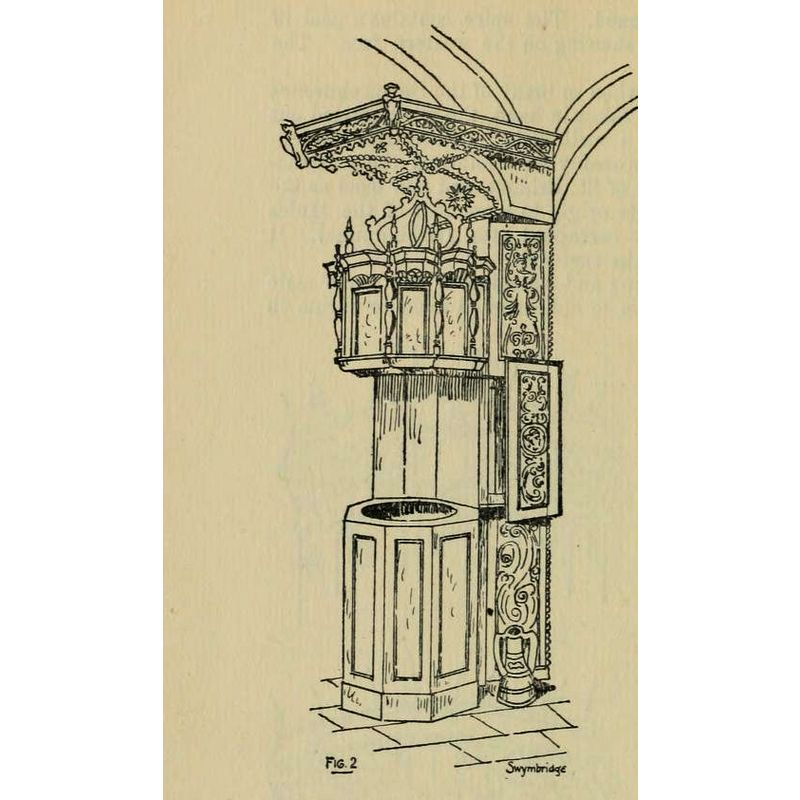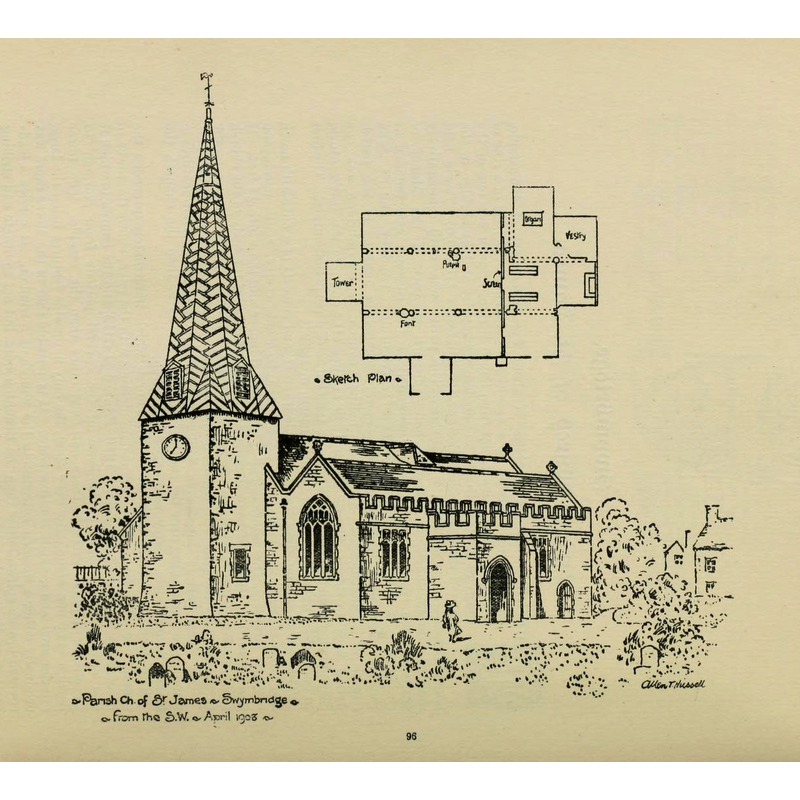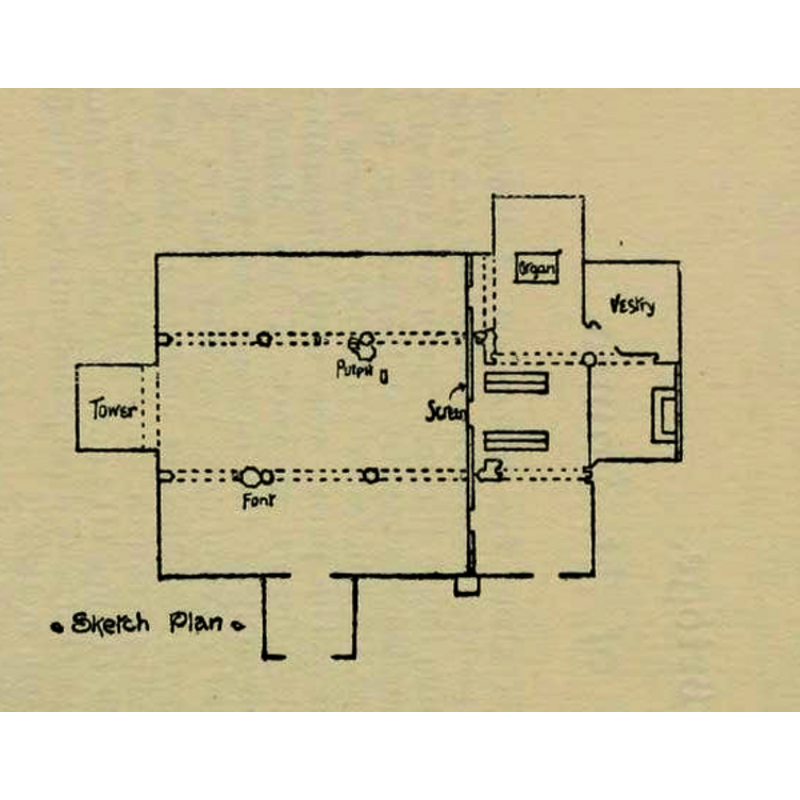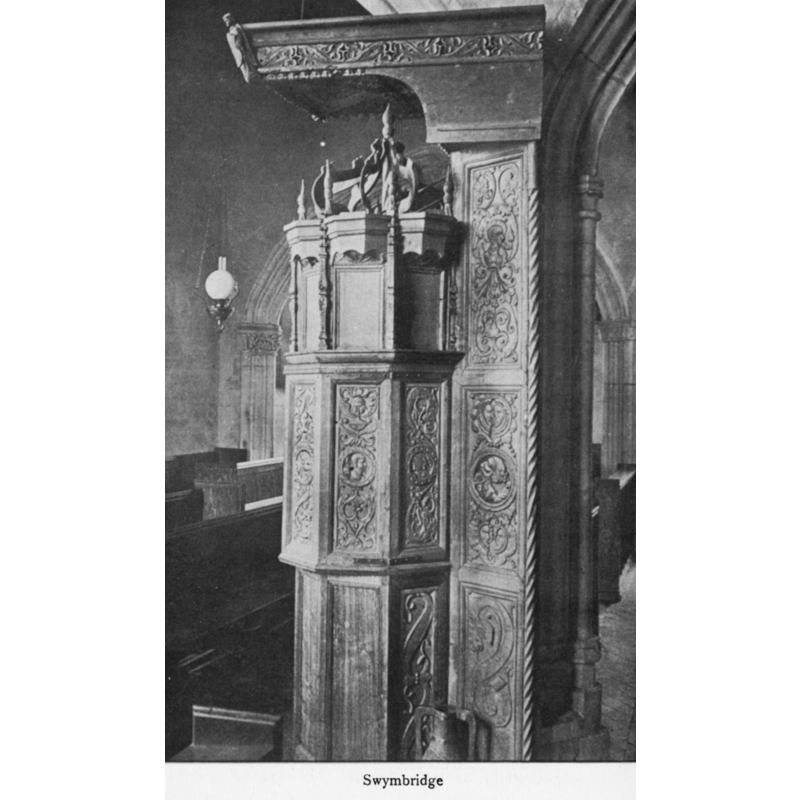Swimbridge / Swymbridge

Image copyright © [in the public domain]
PD
Results: 7 records
LID01: human figure - male - grotesque or fantastic - Green Man or woodwoose - head - 2
Scene Description: strings of pearls stemming from the mouths
Copyright Statement: Image copyright © At the edge, 1996
Image Source: Ruth Wylie's 'The Green Man...' (1996)
Copyright Instructions: [copyright of At the edge -- the use of the image here meets the conditions stipulated by copyright owner]
view of church exterior - southwest view
view of church interior - plan
view of font and canopy, baldachin - canopy
view of font cover and canopy
view of font cover and canopy, baldachin
INFORMATION
FontID: 01137SWI
Object Type: Baptismal Font1
Church/Chapel: Parish Church of St. James the Apostle
Church Patron Saints: St. James
Country Name: England
Location: Devon, South West
Directions to Site: Swimbridge is located 7 km ESE of Barnstaple, just S of the A36, in NW Devon
Ecclesiastic Region: Diocese of Exeter
Font Location in Church: In the nave, under the pulpit
Credit and Acknowledgements: We are grateful to Dr. Roger Peters, of www.wissensdrang.com, for his permission to use the transcription of and images from Stabb (1908)]
Font Notes:
Click to view
Cox-Harvey (1907) relate that "a curious custom prevailed in England in post-Reformation days, chiefly at the beginning of the Jacobean period, of enclosing the font in ornamental or plainly panelled woodwork. Occasionally this was done in combination with a font cover, of which method a splendid example survives in the church of Swimbridge, North Devon, where there is not only a grand font cover rising from the wooden font case, but the whole is surmounted by an elaborate and tasteful canopy springing from one of the pillars"; they later (ibid., p. 233) qualify it as "the finest example of its kind", an "elaborate piece of workmanship". Bond (1908) describes its ornamentation as a especially fine example of late Renaissance detail; of the structure itself, he (ibid.) adds that it is "a design evidently deriving from that of a Jacobean pulpit and sounding-board" of which the one at Swymbridge is a fine example. The hutchet-like middle part has doors that open to provide access to the basin well. Described and illustrated in Stabb (1908): "The Jacobean font cover has doors and canopy with fine carving [...]. In England, in post-Reformation times [i.e., after ca. 1550], principally at the beginning of the Jacobean period [1603], it was often the custom to enclose the font in panelled woodwork, sometimes plain, sometimes ornamented. In this church we get a good example of the wooden casing in conjunction with an elaborate font cover, surmounted by a canopy projecting from one of the pillars. The panels of the cover, which open for access to the font, are well carved, and the canopy, is also elaborately carved and gilt. The canopy looks as if at one time it might have served as the sounding-board of a pulpit." Noted and illustrated in Hussell (1910): "The oak canopied font [...] is peculiar, and in quite a mixture of styles. The font is of lead, encased in plain panelling down to the floor, above which are hinged doors foring a cupboard; and these are surmounted with an elaborate cover, in a combination of Queen Anne and Gothic styles. The canopy contains some remains of Gothic cresting and cable moulded ribs. The side panels, running up from the floor to the canopy, and the doors, are excellently carved in very refined Italian Renaissance designs." Pevsner (1952) writes): "Font. A most extraordinary contraption: lead bowl in octagonal panelled early C18 casing, and folding cupboard doors with Early Renaissance panels between the case and the cover. The cover is odd mixture of Renaissance and Gothic elements (much renewed). Above it a canopy with Perp leaf motifs and crossed-rib and starred ceiling. Is the whole really in its original state?" Described in Betjeman (1958) as "a remarkable piece of Renaissance work". The canopy is dated to the 16th century in Cautley (1982). Although excluded by its date from the scope of this Index, Jenkins' (1999) description may be enough of an excuse for its inclusion: "one of the most remarkable in England. It consists of an elongated 18th-century octagonal cupboard, with a Gothic openwork top, and a canopy like a pulpit tester. It includes panels with early Renaissance scrollwork dated to Henry VIII's reign. The font itself, almost an afterthought, is a simple bowl enclosed inside the cupboard doors. Altogether a curious contraption." A detail of the cover, illustrated in Ruth Wylie's 'The Green Man...' (1996), shows two moon-like faces opposite each other, both with string of pearls flowing up from the mouth; Wylie mentions the local vicar's suggestion that the pearls may represent speech. [NB: we have no information on whether or not the font itself is of the same date as the cover]. The font-cover is noted and illustrated in Howard & Crossley (1919).
COORDINATES
UTM: 30U 431986 5656156
MEDIUM AND MEASUREMENTS
Material: Metal and wood, lead and oak
LID INFORMATION
Date: 16th century? / 17th century?
Material: wood, oak?
Apparatus: no
Notes: [cf. FontNotes]
REFERENCES
Betjeman, John, An American's Guide to English Parish Churches (including the Isle of Man), New York: McDowell, Obolensky, 1958
Bond, Francis, Fonts and Font Covers, London: Waterstone, 1985 c1908
Cautley, Henry Munro, Suffolk churches and their treasures, Woodbridge: The Boydell Press, 1982
Cox, John Charles, English Church Furniture, New York: E.P. Dutton & Co., 1907
Howard, F.E., English Church Woodwork: a Study in Craftmanship during the Mediaeval period A.D. 1250-1550, London: B.T. Batsford, 1919
Hussell, Allen T., North Devon Churches: Studies of some of the ancient buildings, Barnstaple: Printed at the 'Herald' Press, 1910
Jenkins, Simon, England's Thousand Best Churches, London and New York: Allen Lane, the Penguin Press, 1999 [2000 rev. printing]
Pevsner, Nikolaus, North Devon, Harmondsworth: Penguin, 1952
Wylie, Ruth, "The Green Man, Variations on a Theme", 1996, At the edge, 1996





